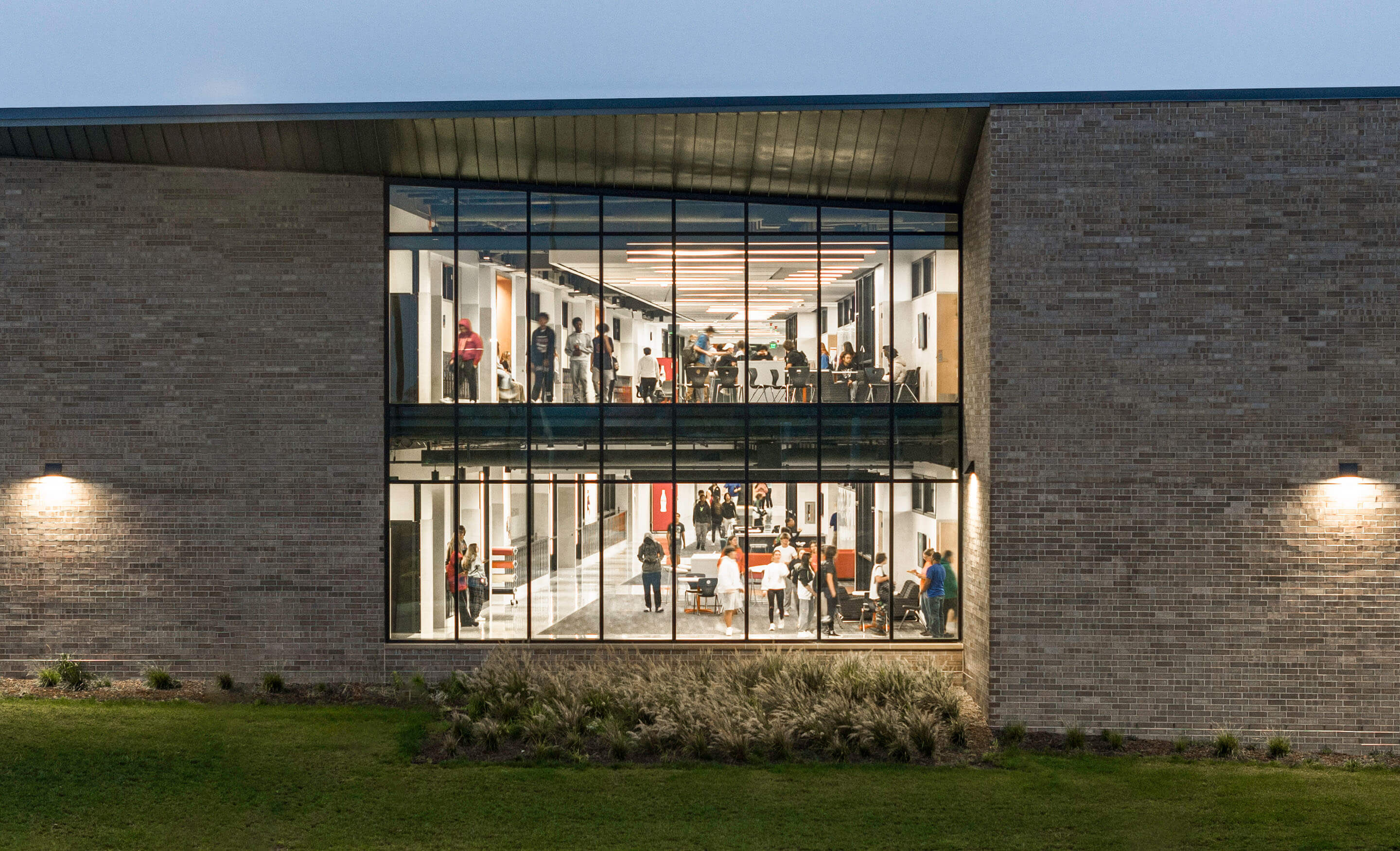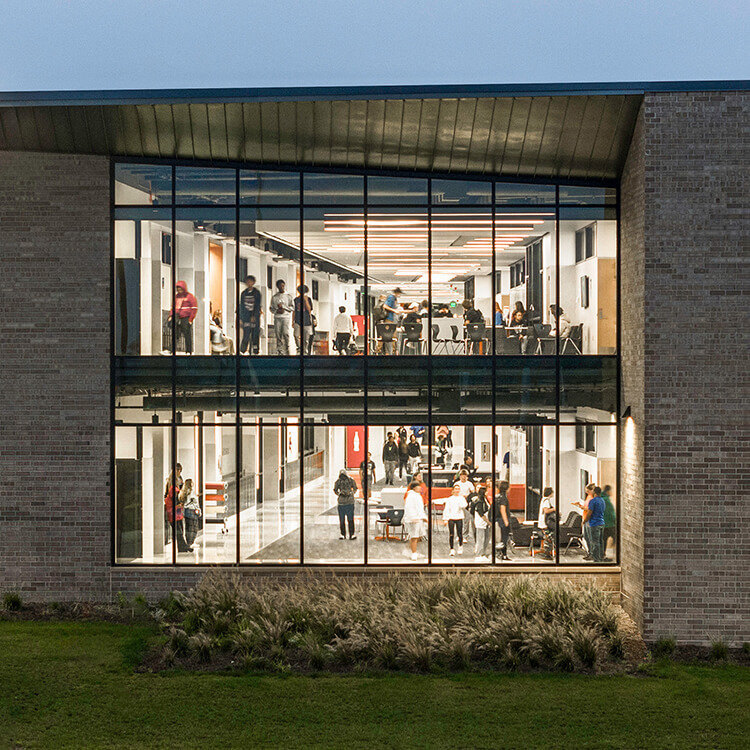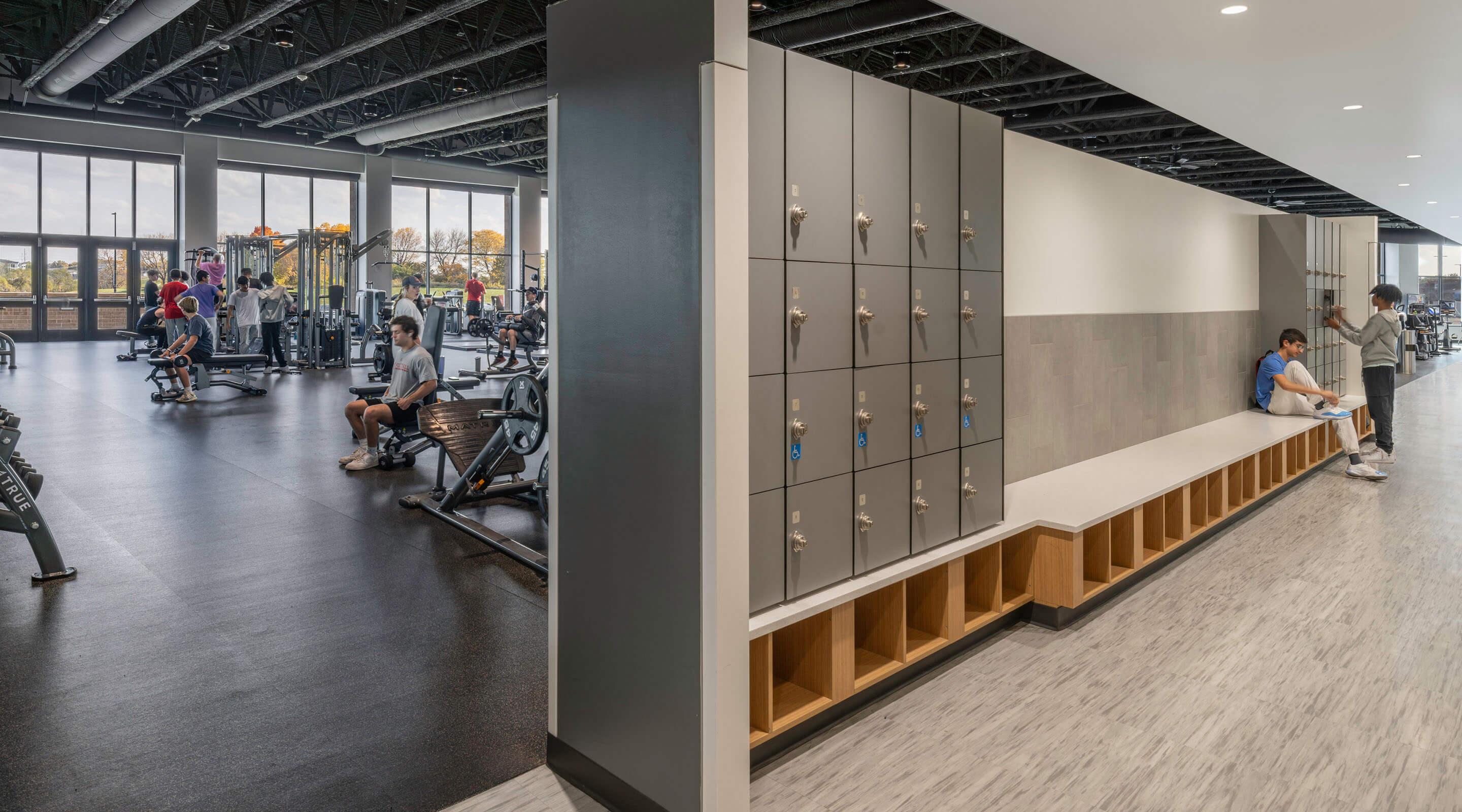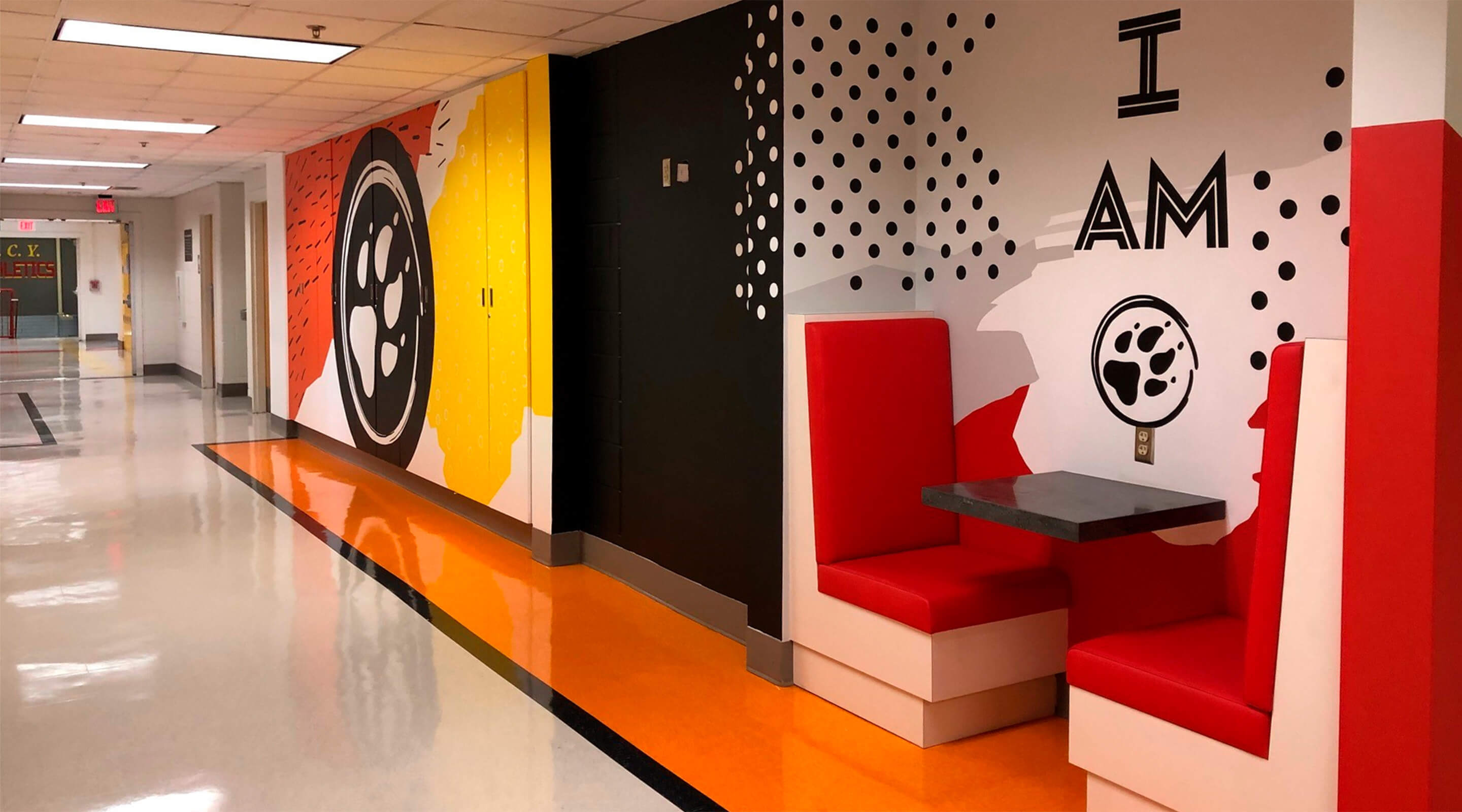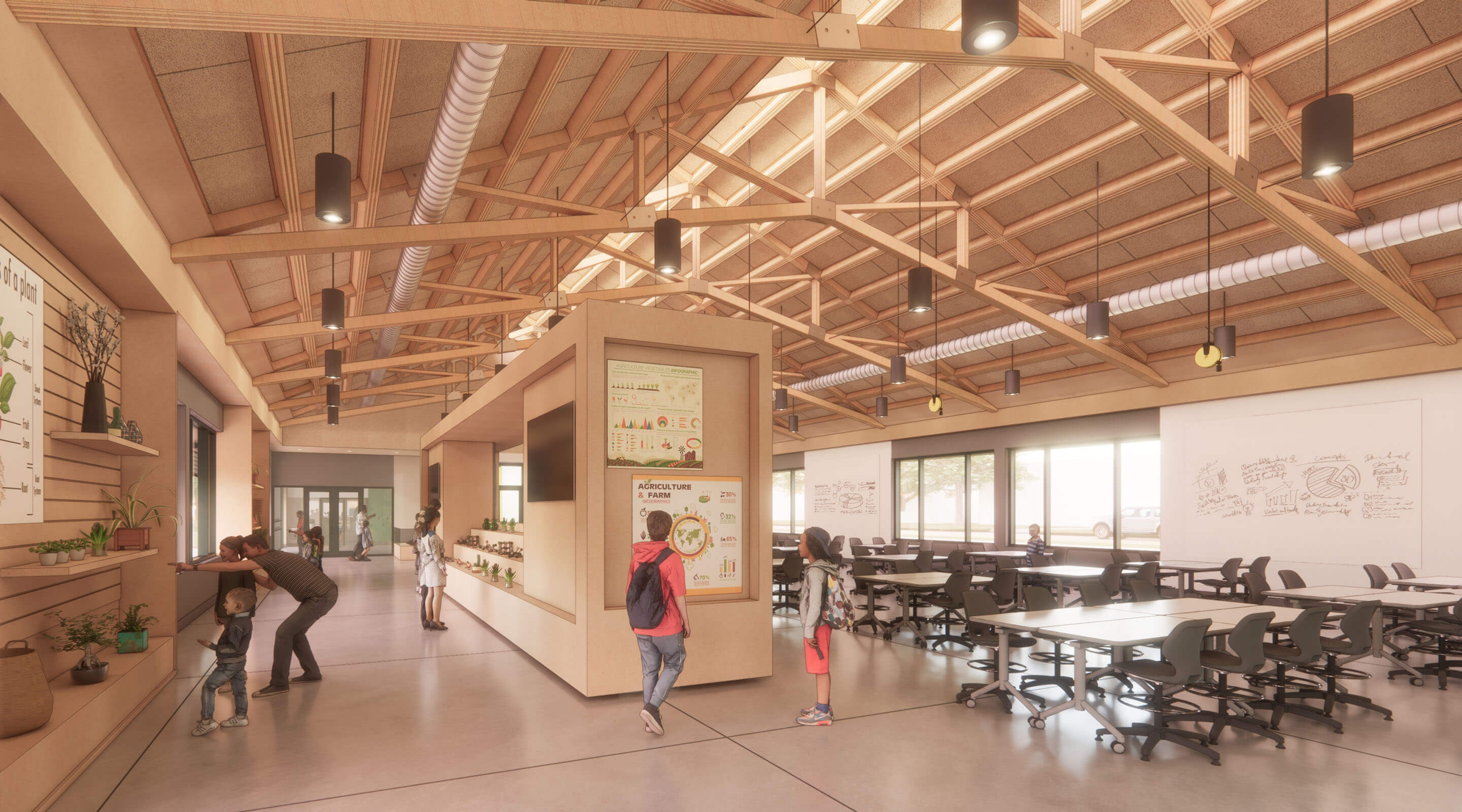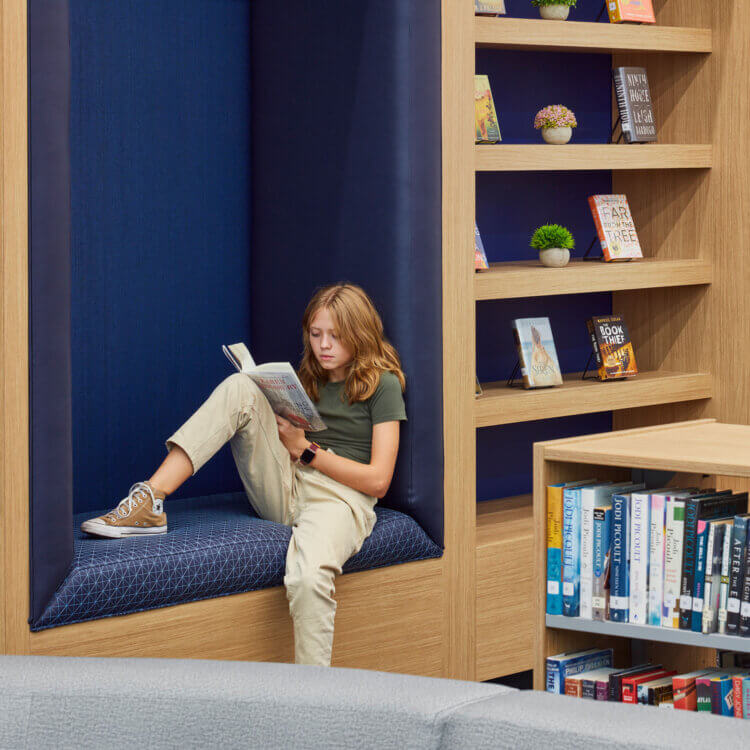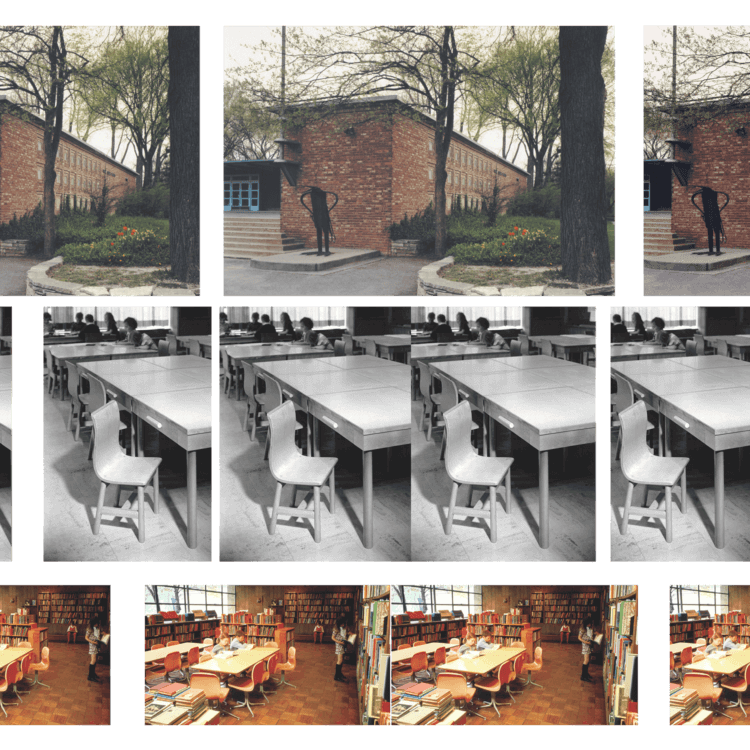Westview High School and YMCA
Omaha, Nebraska
When Westview High School was in the early planning stages, the visioning process revealed that residents of northwest Omaha and the rapidly growing suburb of Bennington wanted more recreational and educational resources. This need would only increase as the population grew.
“It helped us see that we needed to create spaces where everybody could come in and be a learner,” says Susan Christopherson, Omaha Public Schools’ chief academic officer. A partnership between the school district and the YMCA of Greater Omaha resulted in a new high school with shared facilities like a swimming pool, weight room, and ball courts that serve students and the public.
The YMCA offers classes for everyone, from T-ball and swimming for young children, to small-group fitness training for adults, to courses like “Brain and Body” for people living with Parkinson’s Disease. “There was quite an effort to work together to help support the area’s growth and development,” Christopherson says.
